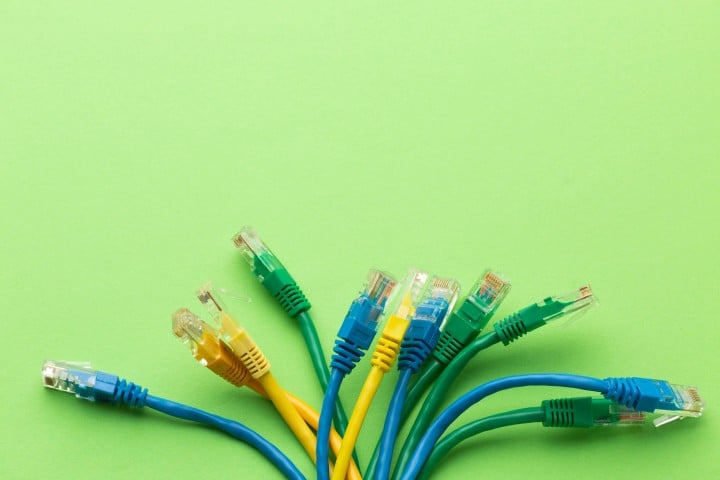Moving to a new home is an exciting time filled with possibilities and new beginnings. However, it also comes with a list of tasks that need to be done to ensure everything runs smoothly. One important aspect of settling into a new home is setting up your internet connection. A strong, reliable internet connection is essential for work, entertainment, and staying connected with friends and family. One way to ensure you have the best internet experience is by choosing the right ethernet cable. This guide will help you understand everything you need to know about ethernet cables so you can make the best choice for your new home.

What is an Ethernet Cable?
An ethernet cable is a type of network cable that is used to connect devices to a local area network (LAN). This includes connecting your computer, gaming console, or smart TV to your modem or router to access the internet. ethernet cables are known for providing faster and more stable internet connections compared to Wi-Fi, making them a popular choice for home networks.
Types of Ethernet Cables
There are several types of ethernet cables available, each with different speeds and capabilities. The main types of ethernet cables are:
Cat5
Cat5, or Category 5, is an older type of ethernet cable that can support speeds up to 100 Mbps (megabits per second) and a bandwidth of 100 MHz (megahertz). While it is still used in some older networks, it is not recommended for new installations because newer cables offer much better performance.
Cat5e
Cat5e, or Category 5 enhanced, is an improved version of Cat5. It can support speeds up to 1 Gbps (gigabit per second) and a bandwidth of 100 MHz. Cat5e cables are more affordable and are a common choice for home networks.
Cat6
Cat6, or Category 6, offers higher performance than Cat5e. It can support speeds up to 10 Gbps and a bandwidth of 250 MHz. Cat6 cables also have better insulation to reduce interference and crosstalk, making them a great option for faster and more reliable connections.
Cat6a
Cat6a, or Category 6 augmented, is an enhanced version of Cat6. It can support speeds up to 10 Gbps and a bandwidth of 500 MHz. Cat6a cables have even better insulation and are suitable for high-performance networks, especially in environments with a lot of electronic interference.
Cat7
Cat7, or Category 7, is a high-performance ethernet cable that can support speeds up to 10 Gbps and a bandwidth of 600 MHz. It has excellent shielding to minimize interference and is often used in professional and industrial settings.
Cat8
Cat8, or Category 8, is the latest and most advanced type of ethernet cable. It can support speeds up to 40 Gbps and a bandwidth of 2000 MHz. Cat8 cables are designed for data centers and other high-performance environments, but they can also be used in home networks for the best possible performance.
Factors to Consider When Choosing an Ethernet Cable
When choosing an ethernet cable for your new home, there are several factors to consider:
Speed Requirements
Think about the internet speed you need for your activities. If you mainly use the internet for browsing and streaming, a Cat5e or Cat6 cable should be sufficient. However, if you do a lot of online gaming, video conferencing, or large file transfers, you might benefit from the higher speeds offered by Cat6a or Cat7 cables.
Cable Length
Consider the distance between your devices and the router. ethernet cables come in various lengths, from a few feet to over 100 feet. Make sure to measure the distance and choose a cable length that provides some extra slack without being too long, as excessively long cables can lead to signal degradation.
Shielding
If your home has a lot of electronic devices or is located in an area with high interference, consider choosing a shielded cable like Cat6a or Cat7. Shielded cables have better protection against electromagnetic interference (EMI) and can provide more stable connections.
Budget
Ethernet cables vary in price, with higher performance cables typically costing more. Determine your budget and choose the best cable that meets your needs without overspending. Cat5e and Cat6 cables are usually affordable and offer good performance for most home networks.
Future-Proofing
If you want to future-proof your network, consider investing in a higher-performance cable like Cat6a or Cat7. This way, you can be prepared for any future upgrades to your internet speed or home network setup without needing to replace the cables.
How to Install Ethernet Cables in Your New Home
Once you’ve chosen the right ethernet cable, it’s time to install it in your new home. Here are some steps to help you get started:
Plan Your Network Layout
Before you start installing cables, plan out your network layout. Determine where your modem and router will be located and identify the devices you want to connect via Ethernet. This will help you decide on the best cable lengths and the most efficient routing paths.
Gather Tools and Materials
To install ethernet cables, you’ll need some basic tools and materials, including:
- Ethernet cables of the appropriate lengths
- Cable clips or adhesive cable mounts
- A cable tester (optional but helpful)
- A drill and drill bits (if you need to run cables through walls or floors)
- A measuring tape
Run the Cables
Start by running the cables from your router to the devices you want to connect. You can route the cables along baseboards, through walls, or under carpets to keep them out of sight and prevent tripping hazards. Use cable clips or adhesive mounts to secure the cables in place.
Connect the Devices
Once the cables are in place, connect one end of each cable to your router and the other end to the respective devices. Make sure the connections are secure and that the cables are not kinked or damaged.
Test the Connections
After connecting the cables, test the connections to ensure everything is working properly. You can use a cable tester to check for any issues with the cables, or simply test the internet speed on your devices to make sure they are getting a strong and stable connection.
Benefits of Using Ethernet Cables
Using ethernet cables in your new home offers several benefits:
Faster Internet Speeds
Ethernet cables provide faster and more consistent internet speeds compared to Wi-Fi. This is especially important for activities that require high bandwidth, such as online gaming, video conferencing, and streaming high-definition videos.
More Stable Connections
Ethernet cables offer more stable connections with less interference and latency compared to Wi-Fi. This means you are less likely to experience dropped connections or buffering issues, providing a smoother internet experience.
Improved Security
Ethernet connections are generally more secure than Wi-Fi because they are less susceptible to hacking and interference. This can help protect your personal information and ensure your internet connection remains private.
Better Performance for Multiple Devices
Using ethernet cables can help improve the overall performance of your home network, especially if you have multiple devices connected. This can prevent congestion and ensure each device gets the best possible connection.
Conclusion
Moving to a new home is an exciting opportunity to set up your space exactly the way you want it, including your home network. By choosing the right ethernet cable, you can ensure you have a fast, stable, and secure internet connection for all your devices. Consider your speed requirements, cable length, shielding, budget, and future-proofing needs when selecting an ethernet cable. With the right cable and a well-planned installation, you’ll be able to enjoy a seamless internet experience in your new home.
We hope you found this blog post on Moving To A New Home? Guide On Choosing The Right Ethernet Cable, useful. Be sure to check out our post How to Install a Home Security System? on for more great tips!
Have Experience in the Moving Industry? Want an Additional Income Stream? Work With All Around Moving!
Partner with us and we’ll help you make money. Click here to learn more.





